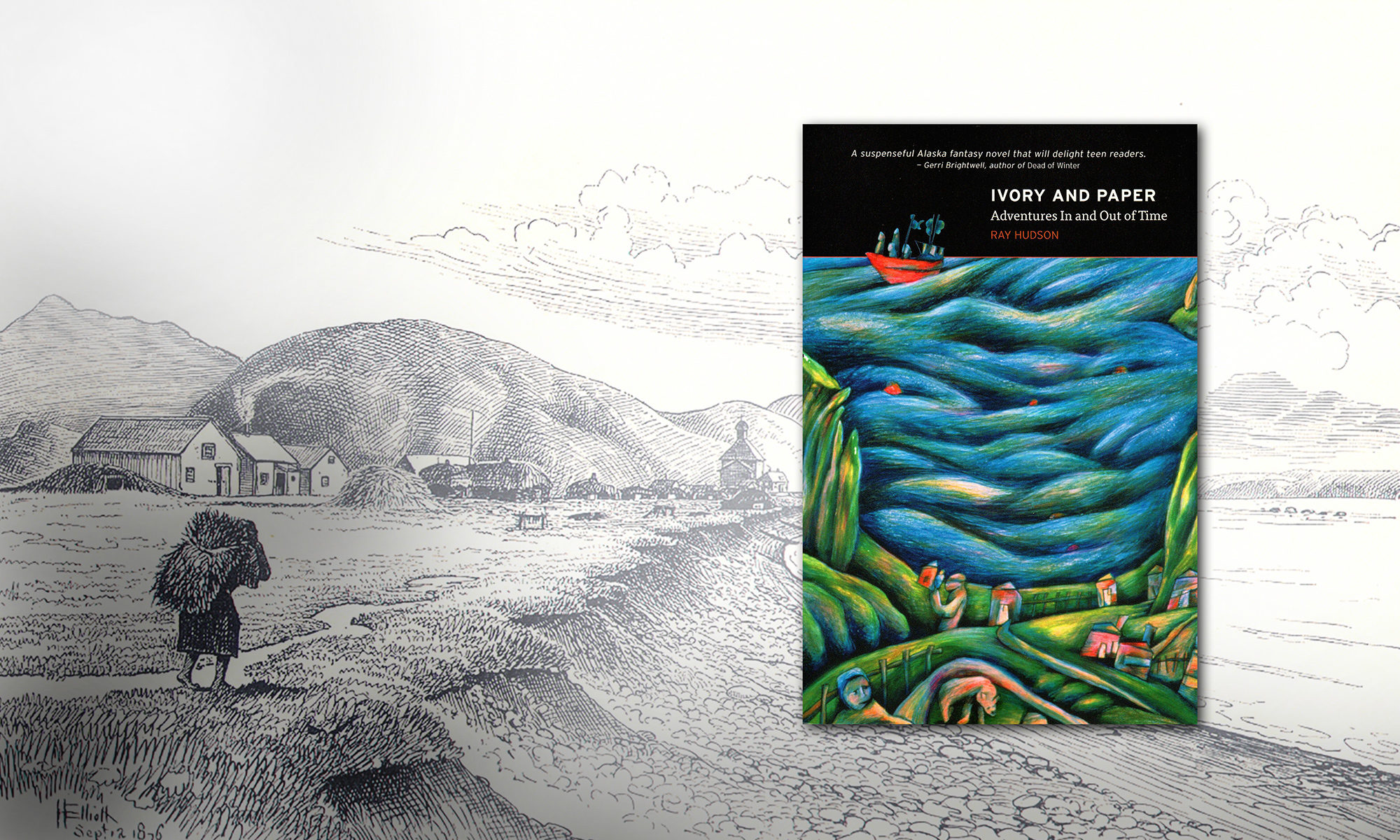Guide to Various Subjects Mentioned in Ivory and Paper
PART THREE: TO THE BEGINNING OF THE WORLD
Page 86-87: The attic.
As I remember, there were no steps leading up into the attic. The one time I explored it a little, I used a convenient table or ladder to reach a trap door in the ceiling. I ran my fingers through the dust that had settled between rafters and found several unused spear points, including a couple of small two-sided wooded cases to store them in. These were probably intended for the AC Company’s sea otter hunters. I donated them to the Museum of the Aleutians.
Page 88: “Those old-time Aleuts,” he said, “like Old Man Rostokovich, you’d be surprised at how superstitious they are.” See Netsvetsov on Attuans in several references in The Journals of Iakov Netsvetov, The Atkha Years, 1828-1844.
Page 90: Fa. Shaiashnikov’s insistence that they bring their own food, etc. so as not to burden local people is seen in several passages in the Shaiashnikov Journal 1861-1863.
Page 90: For the icon sent by Veniaminov to Kashaga, see Hudson/Mason, Lost Villages of the Eastern Aleutians, 2014:111.
Page 91: Fa. Shaiashnikov being trapped at Kashega for days because of the weather.
He was at Kashega from October 5 to October 16, 1861 (Julian calendar). It was the chapel at Chernofski that had its roof blown off. (Shaiashnikov Journal 1861-1863. Bancroft Library. Preliminary translation by Lydia T. Black.)
Page 91: People singing as they accompany the priest to Nikolski.
While Veniaminov doesn’t specifically say people sang, he does remark that in 1834 as many as 40 sea otter hunters left hunting and joined him as he traveled to Nikolski. Veniaminov, Ioann, Journals of the Priest Ioann Veniaminov in Alaska, 1823 to 1836, 1993:195, note 2.
Page 95: On women chewing on bird skins, there are several references. See Turner, An Aleutian Ethnography, 2008:75.
Page 95: For when each side of the reversible birdskin parka is worn see Laughlin, Aleuts: Survivors of the Bering Land Bridge, 1980:56.
Page 99: The Alaska Commercial Company had a number of vessels. The steamer Bertha actually dates to a bit later in the 19th century. It was enlarged in 1899. It was used to carry the U.S. mail. Eventually, it burned in 1915.
Page 99: “It would be a good opportunity for me to practice that long-ago language.”
Languages change over time. See the introduction to Bergsland’s Aleut Dictionary, and the introduction to Anna Berge and Moses Dirks, Niiĝuĝis Mataliin Tunux̂tazangis, How the Atkans Talk: A Conversational Grammar.
Page 97: “As Vasilii slipped his robe over his head, I realized that everybody involved in the services somehow changed into somebody else.”
The change in personality that occurred after putting on church robes was expressed by Phil Tutiakoff when he wrote about being an altar boy in the 1930s. (Undated manuscript in the author’s collection.)
Page 102: “Unangax̂ attributed their good eyesight to a moderate use of salt.” Veniaminov Notes on the Islands of Unalashka District, 1984:163.
Page 103: “All three of us were dressed in kamleikas, the gut raincoats of ancient Unangax̂.”
These very waterproof garments were usually made from sea lion intestine. Several examples can be found at the website for Peter the Great Museum (Kunstkamera): http://www.kunstkamera.ru/kunst-catalogue/items/items.seam?c=ALEUT&qt=s&t=kamleika
Page 104: “The Beginning of the World” – see page 6.
Page 106: “The Nikolski people,” Vasilii said, “tell how a woman used this volcano for breathing.”
This is taken from the beginning of “The Chuginadak Woman,” in Bergsland and Dirks, Aleut Tales and Narratives, 1990:449.
Page 106: For traditional Unangax̂ boots, see Turner, An Aleutian Ethnography, 2008: 72-73. See photograph in Laughlin, Aleuts: Survivors of the Bering Land Bridge, 1980:56.
Page 108: “You won’t find blueberry bushes like at home….”
The high bush blueberries are not found west of Umnak.
Page 109: The grass tent. Anfesia Shapsnikoff (1901-1973) explained how to make this emergency shelter. I have to confess that I have never tried to make one of these. If anyone does, please let me know how it works.
Page 122: “I…waited until the wick burning in her lamp had gone out.”
Anfesia Shapsnikoff tried without success to get Jenny Krukoff (original from Attu) to tell her what was used for wicks in stone lamps. Anfesia thought that regular moss burned too quickly.
Page 110: “It’s what it means to be Unangax̂.”
These come from “The Right Way to Live as an Unangax̂,” Alaska Native Knowledge Network. Recovered April 15, 2015, at f.edu/ANCR/Values/Unangan.html
Page 110: “When they came to a new beach, they would stomp barefooted on sea urchin shells to make the place their own.”
Hudson, ed., “Stories from Marva Petikoff [told by Nick Galaktinoff]” Cuttlefish Two: Four Villages, Unalaska City School District, 1978:24.
Page 110: “They used to give their kids names that would shame them and make them angry.”
Veniaminov, Notes on the Islands of the Unalashka District, 1984:191. Bergsland, Ancient Aleut Personal Names, 1998:62-63.
Page 111: One story is that the Umnak people got the Russians to destroy the villages on one of the Four Mountain Islands, killing the men and forcing the women who survived to move elsewhere. Maybe the same thing happened to the other islands.
Veniaminov, Notes on the Islands of the Unalashka District, 1984:73. Coxe, Account of the Russian Discoveries Between Asia and America, 1780:158. Black, Atka: An Ethnohistory of the Western Aleutians, 1984:44.
Page 111: Women as shamans.
This is in Netsvetov’s description of Atkan beliefs in Veniaminov, Notes on the Islands of the Unalashka District, 1984:367.
Pages 111-112: The story of the two old women who danced is “The Two Little Old Women” in Bergsland and Dirks, Aleut Tales and Narratives, 1990:422-423.
Page 114: Women’s work as humiliation. See the reference on page 4. Veniaminov, Notes on the Islands of the Unalashka District, 1984:211.
Page 114: “How you treat those charms is how you will be treated.” See the reference on page 75.
